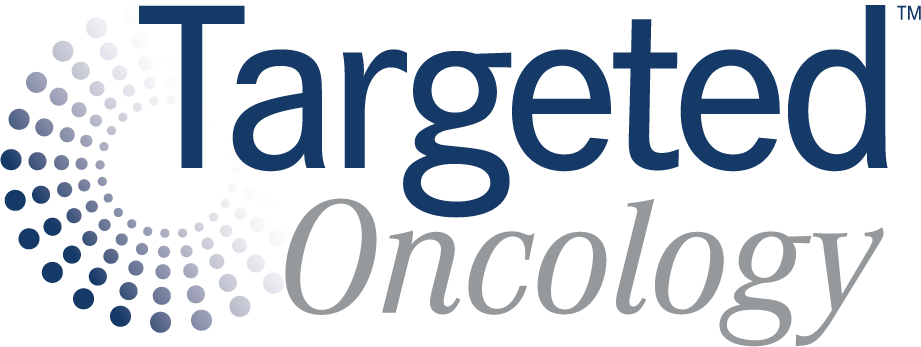Breakthroughs, Personalization, and the Future of Lymphoma Care
Ann LaCasce, MD, MMSc, delved into some of the most recent advances in the lymphoma space, exploring how these new therapies are offering hope for more durable remissions and better quality of life.
Ann LaCasce, MD, MMSc

The lymphoma treatment landscape continues to evolve, with exciting advancements reshaping how oncologists approach care for patients with both common and rare subtypes. From bispecific antibodies showing promising results in follicular and diffuse large B-cell lymphoma to new insights in mantle cell lymphoma (MCL) and stem cell transplantation, the field is filled with breakthroughs that could significantly improve patient outcomes.
In an interview with Targeted OncologyTM, Ann LaCasce, MD, MMSc, director of the Dana-Farber/Massachusetts General Brigham Fellowship in Hematology/Oncology, delved into some of the most recent advances in the space, exploring how these new therapies are offering hope for more durable remissions and better quality of life.
Targeted Oncology: How do you see bispecific antibodies transforming lymphoma research in 2025?
LaCasce: These are really making an impact in both diffuse large B-cell lymphoma and follicular lymphoma. We have seen pretty amazing responses in the relapsed and refractory setting, and we are seeing these investigator-initiated studies in the frontline setting with very high complete remission rates, and the durability is looking very promising. I think we are going to continue to see these studies, maybe with or without other novel agents, like oral agents, and it is really moving forward. The same is true in diffuse large B-cell lymphoma. Again, we saw pretty remarkable activity initially in patients who had relapsed after [chimeric antigen receptor (CAR)] T-cell therapy. Now there have been a number of studies incorporating them upfront, and the overall and complete response rates look good. We are having these randomized studies to try to prove that these result in longer, durable remissions.
One thing we will have to keep an eye on is the toxicity profile. There is definitely an increased risk of infection. I think the more that we can pay attention to that and try to figure out how to mitigate that and be proactive is going to be important.
Blood Cancer: © Hadi - stock.adobe.com

In MCL, what advancements are being made in comparing ibrutinib with chemoimmunotherapy, and how might this shape disease control strategies in the future?
There was an interesting study at [The American Society of Hematology (ASH) Annual Meeting & Exposition] where they compared chemoimmunotherapy to ibrutinib [Imbruvica]-based therapy with maintenance coming from Europe.1 It looked like ibrutinib plus rituximab [Rituxan] looked better in terms of progression-free survival, but when they dissected that out, it looked like that was mostly being driven by R-CHOP [rituximab, cyclophosphamide, doxorubicin, vincristine, and prednisone], because investigators had the option of either using R-CHOP or bendamustine plus rituximab. I think we do not use ibrutinib in this country. The other [Bruton tyrosine kinase (BTK)] inhibitors are probably a bit more potent and clearly safer. I think for certain populations, like elderly patients, this makes a lot of sense.
There were other studies that showed for people who do not have proliferative or aggressive disease, that upfront BTK inhibitors can look good. We have seen data combining with venetoclax [Venclexta] and obinutuzumab [Gazyva] in TP53-related disease, which look good. But I think we are still kind of at a crossroads in mantle cell lymphoma. We need to figure out, for each category of patients, like transplant eligible, younger patients with and without TP53, and then older patients, what is our optimal frontline regimen? I think this was the most exciting work that we saw from ASH. It leads to great outcomes, but a lot of questions.
Could you share some insights into the latest innovations in stem cell transplantation for mantle cell lymphoma?
The [ECOG-ACRIN trial EA4151 (NCT03267433)] was presented at ASH as a late-breaking abstract,2 and I think we should be very proud as a community in the United States that we were able to enroll patients in this study, as it was quite an ask of them. The study focused on transplant-eligible patients who received chemoimmunotherapy, based on the investigator’s choice, and were then assessed for minimal residual disease [MRD]. Those who were MRD negative and in complete remission were [randomly assigned] to 1 of 3 groups: transplant without maintenance, transplant with maintenance rituximab, or maintenance rituximab alone. The results showed no difference in progression-free survival or overall survival across these groups.
I think this finding is very important, as we’ve been transplanting patients for decades, which is a major undertaking. This data aligns with the TRIANGLE study [NCT02858258] results from Europe, which asked a different question but reached a complementary conclusion.3 For the small percentage of patients who were MRD-positive, those who underwent transplant did well; however, we do not know how they would have done in the absence of transplant, so it is harder to draw firm conclusions for that group.
It is worth noting that the majority of our patients achieve MRD negativity regardless of the initial chemoimmunotherapy regimen they receive. This makes the study particularly impactful and practice changing. Finally, it is exciting to see that we could successfully accrue patients for a randomized study in the US, where patients were [randomly assigned] to transplant or no transplant. This was a significant accomplishment with very important results.
What strides are being made to include older patients in research?
I think there are a number of trials that have been conducted using less aggressive approaches, such as bispecific antibodies, with or without other drugs like polatuzumab vedotin [Polivy], or treatments studied in trials like glofitamab [Columvi] in the STARGLO study [NCT04408638]. These approaches are particularly designed for patients who may not be ideal candidates for CAR T-cell therapy. It is important to recognize that the patients we see in the clinic are often different from those who qualify for aggressive clinical trials. It is reassuring to see trials with more flexible eligibility criteria, allowing us to treat patients who may not meet the stringent criteria of traditional studies.
Lymphoma is a disease that predominantly affects older patients, and we encounter many of these individuals in our practice. It’s crucial to develop strategies and trial designs that apply to this population. As a community, I think we need to adopt more liberal eligibility criteria for clinical trials to better reflect real-world patients. I believe we are starting to see progress in this area, and there’s been growing recognition of the need to address this gap.
How is the focus on quality of life evolving in lymphoma research? What changes do you anticipate with this in 2025?
I think this is a really important issue, and it takes a significant amount of effort to collect quality-of-life data. However, the patient voice is critical, especially when there are two viable treatment options. For instance, consider a patient who could either receive CAR T-cell therapy or a bispecific combination, whether in follicular or large cell lymphoma. CAR T-cell therapy is more of a one-and-done approach but is very intensive in the short term, while a bispecific combination represents a longer-term commitment. When both options provide excellent outcomes, it becomes essential to listen to the patient to determine their preferences.
For example, would subcutaneous treatment be more appealing than [intravenous (IV)], or would the patient prefer the convenience of IV? These are important considerations, and I think patient input can guide us in making treatment decisions that align with their needs and preferences. I hope that advancements in electronic medical records and the increasing familiarity of patients with these tools will enable us to collect more of this type of data. This information is absolutely critical to improving care and tailoring treatments to the individual.
Looking at The Lymphoma Research Foundation and the upcoming workshops, what kind of workshops do you think will advance therapies for these different subtypes?
The Lymphoma Research Foundation does a phenomenal job hosting international workshops and consortia that bring experts together to discuss key issues in lymphoma research. For example, there was a workshop on follicular lymphoma last fall, which was fantastic. It fostered a lot of meaningful dialogue and connections within the field. This year, the Foundation is organizing workshops on survivorship, adolescent and young adult lymphoma, and another MCL consortium.
MCL is an area with many unanswered questions, so it will be fascinating to hear how experts are thinking about designing the next trials and addressing the most critical issues. For the first time, there will also be a workshop focused on T-cell lymphoma, which is especially exciting. T-cell lymphoma has lagged behind in advancements and is generally a rare, challenging disease to treat. Collaboration across multiple centers is essential for progress, as single centers, even large ones, typically cannot accrue enough patients for a study on their own.
What is also unique about these workshops is the inclusion of scientists who work in the lab to understand the biology and pathways of the disease. Their insights are crucial in shaping the next clinical questions and trial designs. The interplay between researchers and clinicians at these meetings is incredibly inspiring and essential for advancing therapies for different lymphoma subtypes.
Beyond 2025, what areas of lymphoma research do you believe hold the most promise for breakthroughs in coming years?
I am hopeful that we are going to see new advancements in T-cell lymphoma. We have already witnessed remarkable progress with CAR T-cell therapies and bispecific antibodies, and diseases we once thought were inevitably incurable may no longer hold that label. We are seeing more and more long-term survivors, which is incredibly encouraging.
Chronic lymphocytic leukemia is another area where we now have an abundance of excellent treatment options. The challenge is figuring out how to personalize these therapies to meet the specific needs of each patient, which is crucial. Hodgkin lymphoma is a disease particularly close to my heart. I love treating it because the outcomes are generally so positive. However, as we continue to improve survival rates, we need to shift our focus to late toxicities and quality of life, especially given the large number of adolescent and young adult patients affected.
We have made significant strides in reducing the need for radiation in Hodgkin lymphoma, which is a major achievement. Still, there are patients who clearly benefit from radiation. The question is: how do we better identify these individuals? How can we further improve upfront therapies so that fewer patients require radiation? While we have made progress, there is still a need for new treatments in the relapsed and refractory setting. Although Hodgkin lymphoma is a smaller patient population, we still see these cases, and I am hopeful that we will see new agents and molecules developed to address their needs.










